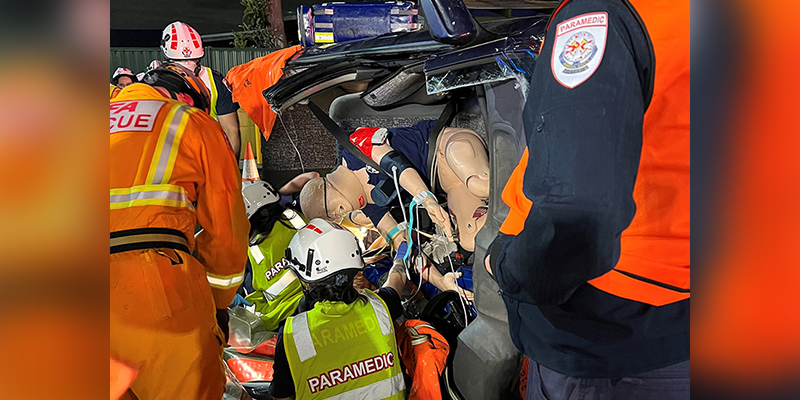Where fat is laid down in the live animal, either within the muscle (intramuscular fat) or around it (subcutaneous fat), plays vastly different roles when it comes to eating quality and carcase yield.
To strike the right balance, Meat Standards Australia (MSA) Producer Engagement Officer, Laura Garland has compiled some helpful tips to help guide on-farm genetic and nutrition decisions.
What’s the difference?
Intramuscular fat (IMF%) is the measure of the chemical fat percentage in the loin muscle of lamb, where the visible component is known as marbling. MSA consumer research shows that IMF% positively impacts eating quality.
FAT (fat depth) is the measure of subcutaneous fat and has implications for lean meat yield (LMY%). FAT is an important production factor for finishing lambs and ewe maintenance. Adequate fat coverage is critical for even carcase chilling and avoiding cold shortening. MSA requires a minimum fat score of 2, which is equivalent to a GR site measurement of 6mm or greater.
Long-term genetic gains
Genetic selection pressure for high yielding carcases and carcase weight has led to an increase in LMY% and shear force (SF5), which are closely correlated traits.
“These traits have a negative relationship with intramuscular fat, so balancing both for an optimum outcome is critical,” Laura said.
“Like wool, where micron and fleece weight are antagonistically correlated, using Australian Sheep Breeding Values (ASBVs) to guide genetic decisions enables producers to move both traits in a desirable direction; leading to fleeces that are both finer and heavier.
“Similarly, by selecting ASBVs for eating quality and yield, it’s possible to produce lamb carcases that are higher yielding, without compromising on eating quality, over time.”
Although both IMF% and FAT measure fat deposits in the carcase, they are genetically different traits, which means only selecting for FAT will have little influence on actual IMF%.
“Not all fat is deposited in the same amounts or rates, so we need to utilise targeted genetic selection to get more fat to lay down within the muscle,” Laura said.
“The most effective way to select for IMF is to avoid relying on correlated traits like FAT but rather selecting on IMF itself.
“IMF has high to moderate heritability and a negative correlation with shear force, so not only does IMF increase juiciness and flavour, it also improves tenderness.”
There are three terminal sire eating quality indexes available to assist balanced selection for LMY% and eating quality. These are ‘EQ – Eating Quality’ and ‘LEQ – Lamb Eating Quality’, which work to improve eating quality with modest gains in LMY, while Terminal Carcase Production (TCP) maintains eating quality with greater gains in LMY.
“Terminal selection indexes allow breeders and producers to increase yield while either maintaining or improving eating quality,” Laura said.
“Align your breeding objectives with your production system and target market, and know what your limiting factor is, for example, knowing if your lamb carcases are adequately meeting fat specs for coverage.”
Visit sheepgenetics.org.au








